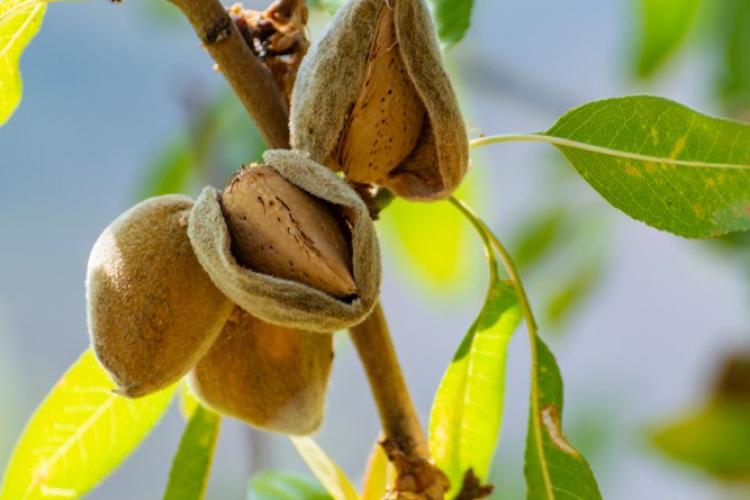
Nutrition for Next Season Starts Here

Post Harvest Potassium
For world-class athletes, the rest and recovery period following an event is crucial. The human body is capable of some amazing things, but without proper care after exertion, athletes may not be at peak form for the next event. Similarly, in California, our world-class tree and vine crops need a period of recovery after harvest to prepare for the next season.
For permanent crops, building up to the fruit-bearing phase is extremely energy intensive. Once the fruit is removed, trees and vines get a chance to recover, but the window is short before the onset of winter dormancy. During this brief post-harvest period, crops get a chance to “build up strength” before returning to the following season’s main event of fruit development.
Research has shown that essentially all of the potassium an almond tree needs, during bloom and early leaf out, comes from what it has stored from the previous season. Seeing that almond trees have up to 90 lbs. of K2O/1,000 kernel lbs. removed (270 lbs. of K2O for a 3,000 lb. crop) from the orchard at harvest, there may not be enough potassium available early the following season. Replenishing some of the removed potassium with post-harvest applications of potassium fertilizer can be extremely beneficial to the next season’s early development.
Post-harvest nutrition doesn’t negate the importance of early season nutrition. However, it could be viewed as a kick starter, ensuring that the tree does indeed have the stored nutrition needed to start the growing season off in peak form.
Solubility of applied nutrients is an important consideration when choosing a post-harvest fertilizer. The window between crop removal and dormancy in certain crops and varieties can be very narrow. This means that the nutrients delivered to the crop need to be readily available to ensure that they are quickly absorbed by the roots and stored for the following season.
Crop Vitality provides two effective options to provide readily available potassium to permanent crops – KTS and K-Row 23. For decades, KTS has been chosen by growers, because of its blending versatility, its ease of use, and most of all, its effectiveness. K-Row 23 is newer to the market and has been steadily growing in popularity because of the flexibility it provides growers with its wide range of recommended application rates. Both products are equally effective at delivering potassium to the crop during the recovery post-harvest period. Because both products are liquids, they can be conveniently injected into fertigation systems where the irrigation water can deliver the nutrition directly to the plant roots.

Seed & Transplant Safe
- Potassium Sulfite
- 23% K2O, 8% Sulfur
- Max Rate - 16 gal/A/App on mature plantings
- Versatile, blends with many fertilizers
- pH neutral reaction, can use on low pH soils
Learn More

Dissolves Free Calcium Carbonate
- Potassium Thiosulfate
- 25% K2O, 17% Sulfur
- Max rate - 10 gal/A/App on mature plantings
- Versatile, blends with many fertilizers
- Thiosulfate improves availability of some nutrients
Learn More
All of the potassium an almond tree needs, during bloom and early leaf out, comes from what it has stored from the previous season.
When time is of the essence, prepare your trees for next season with applications of KTS or K-Row 23. Contact your Crop Vitality representative for more information.
Written by Dan Cook, Crop Vitality, Tessenderlo Kerley Agronomist
Contact a Specialist